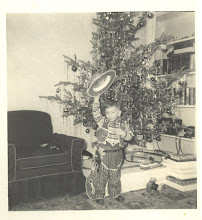Well, Charles Darwin finally made it back to England on HMS Beagle, after a five year voyage. He spent most of his time ashore during the voyage since the actual transit time betweeen the various stops was only about 18 months. Of course the Beagle itself spent a lot of the other 36 months at sea in and around the harbors where Darwin was set ashore for his explorations.
The appendixes at the end of the book turned out to be almost as interesting as the book itself. For instance, the Beagle left England with 22 chronometers in order to be sure that Captain Fitzroy could accurately chart the longitude of a bunch of places, which was the real job of the ship. Even with 22 of the most accurate clocks that could be bought in 1831 the ship's itinerary was planned to allow stops in many places whose longitude was known with fair precision so Fitzroy could calibrate his chronometers by observing and timing the occultations of stars by the moon. Fitzroy took an instrument maker whose sole job was maintenance of the clocks.
It came to me as I was listening to all of this that the sheer amount of detailed mathematical work which needed to be done after the Beagle returned to England was unbelievable. By taking his observations at the known longitude places Fitzroy would have related the time shown by all of those clocks to the actual known time of the occultation. None of this would have had any precise meaning until after he returned to England and compared the time on the clocks to standard Greenwich Mean Time. At that point Fitzroy, and several assistants no doubt, would have had to go back and reconstruct the whole voyage to calculate the real longitude of all the places where he took what had to be tens of thousands of soundings and bearings to known points of land. Almost unbelievable how much detail work had to be involved.
The other thng that struck me was Darwin commenting at length on how easy the voyage was relative to the previous voyages of Captain Cook and the other earlier explorers. The Beagle was 90 feet long and 24 feet wide in the beam. It was home to no less than 74 men for those five long years. Of course that was far fewer men than the Beagle had carried when it was outfitted with 12 cannon as a warship. For that purpose the crew was 120 men. As a survey ship the Beagle carried only 6 cannon.
We think of Charles Darwin as the plump bald guy with the heavy brows whose picture was taken in 1854, or as the fusty old bearded guy whose picture was taken in 1868. But when he went off on the Beagle he was a determined looking 22 year old. A rich 22 year old, by the way. He took a servant with him for the five year exploration trip. He was the grandson of the Wedgwood pottery guy and also the son and grandson of two generations of very prominent doctors. His grandfather had the nerve to turn down King George the 3rd's invitation to be his personal doctor.
The Voyage of the Beagle was an interesting listen.
Subscribe to:
Post Comments (Atom)

No comments:
Post a Comment